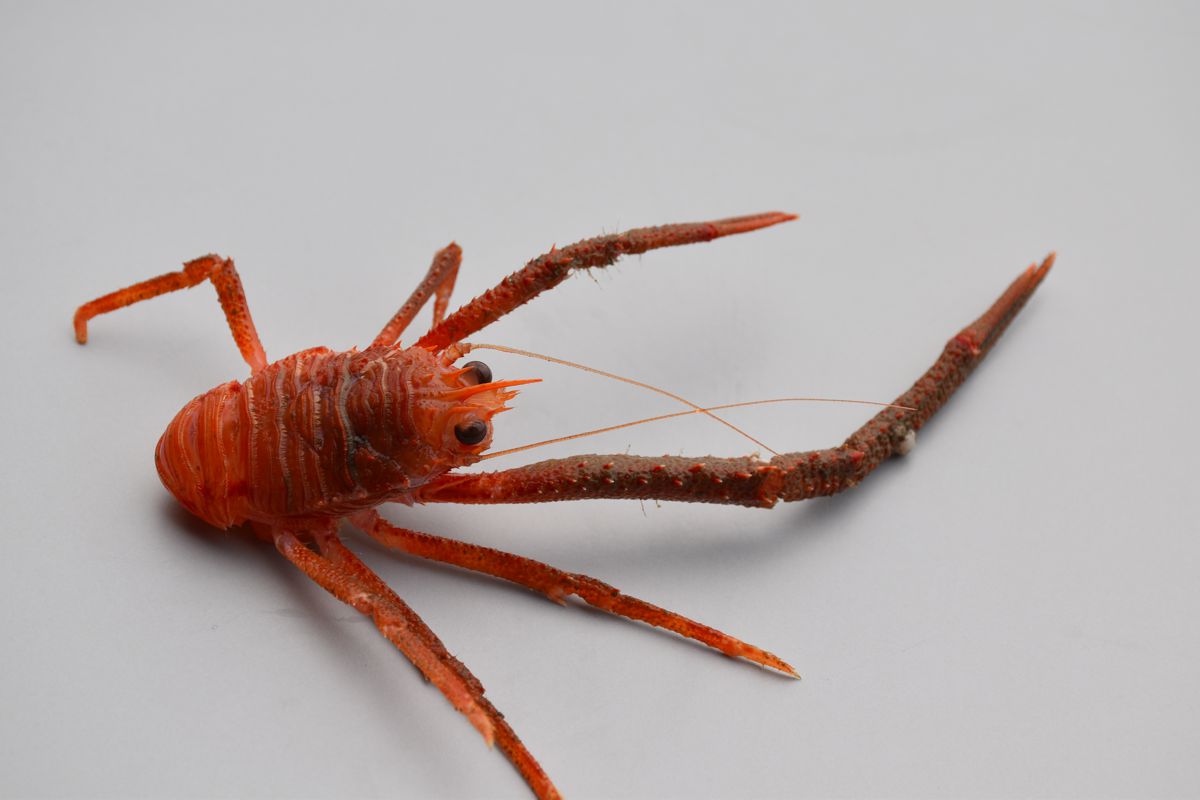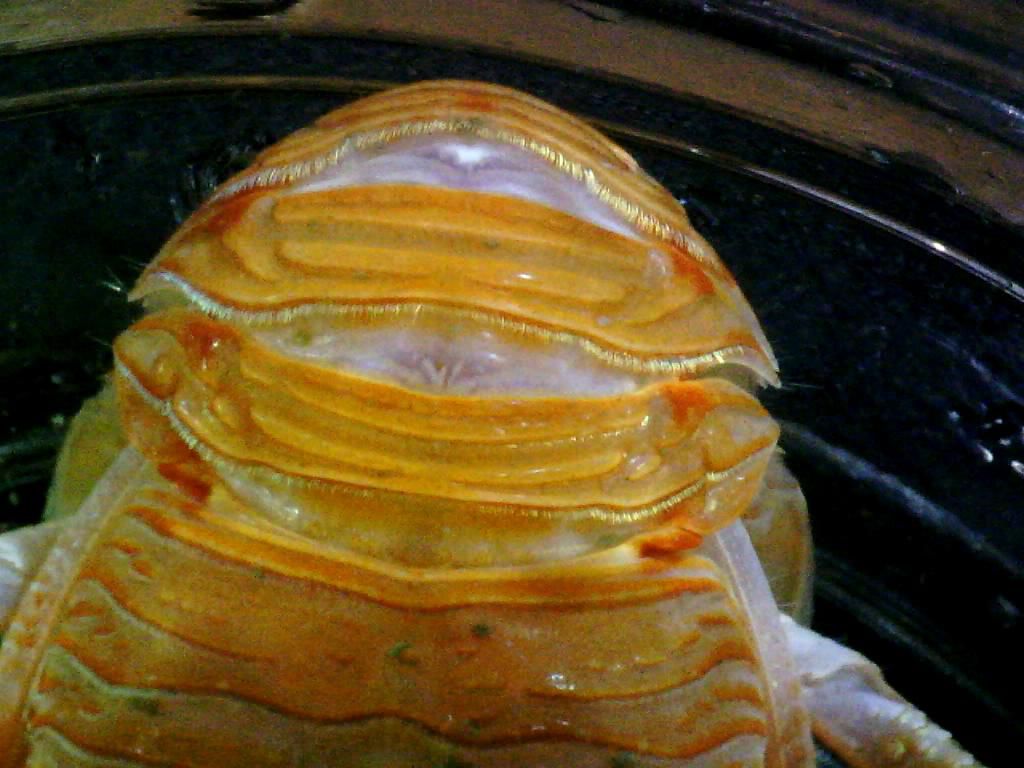Munida quadrispina Benedict, 1902Common name(s): Squat lobster |
|
| Synonyms: |  |
| Phylum Arthropoda
Subphylum Crustacea Class Malacostraca Subclass Eumalacostraca Superorder Eucarida Order Decapoda Suborder Pleocyemata Infraorder Anomura Superfamily Galatheoidea Family Galatheidae |
|
| Munida quadrispina from 100 m depth, San Juan Channel | |
| (Photo by: Dave Cowles, July 2000) | |
How to Distinguish from Similar Species: Munidopsis quadrata's eyes are not pigmented plus it lives only in very deep water.
Geographical Range: Sitka, Alaska to Los Coronados, Baja California
Depth Range: 12-1463 m depth
Habitat: Rock faces or cobble in low current, slightly silty areas.
Biology/Natural
History:
Sometimes live
in areas with low oxygen. Eats detritus, carrion, small
plankton.
This crustacean can actively swim. They are one of the main
species
observed on the surfaces of deep-sea sponges off British
Columbia.
They are predators on other benthic shrimp.
| Return to: | |||
| Main Page | Alphabetic Index | Systematic Index | Glossary |
References:
Dichotomous Keys:Coffin, 1952
Flora and Fairbanks, 1966
Hart, 1982
Kozloff 1987, 1996
Wicksten, 2009
General References:
Hart,
1982
Jensen,
1995
Lamb
and Hanby, 2005
Scientific
Articles:
Antonsen, Brian L. and Dorothy H. Paul, 2000. The Leg
Depressor
and Levator Muscles in the Squat Lobster Munida quadrispina
(Galatheidae)
and the Crayfish Procambarus clarkii (Astacidae)
Have Multiple Heads
with Potentially Different Functions. Brain, Behavior and
Evolution
56:63-85 (DOI: 10.1159/000006678) (Link)
Antonsen, B.L. D.H. Paul, 2001. Serotonergic and octopaminergic systems in the squat lobster Munida quadrispina (Anomura, Galatheidae). J Comp Neurol. 2001 Oct 29;439(4):450-68 (PubMed)
Burd, B.J. 1983. The distribution, respiration and gills of a low oxygen tolerant crab, Munida quadrispina (Benedict, 1902) (Galatheidae, Decapoda) in an intermittently anoxic fjord. M.Sc. Thesis, University of Victoria, Victoria, B.C.
Burd, B.J. 1985. Respiration of a low oxygen tolerant galatheid crab, Munida quadrispina (Benedict, 1902). Canadian Journal of Zoology 63: 2538-2542.
Burd, B.J. and R.O. Brinkhurst. 1984. The distribution of the Galatheid crab Munida Quadrispina (Benedict 1902) in relation to oxygen concentrations in British Columbia fjords. Journal of Experimental Marine Biology and Ecology 81: 1-20.
Wallis, E., D. Paul, B. Antonsen, and R. Hollenberg,
1995. Variations
on a segmental theme: muscle receptor organs and extensor
neuromusculature
in the squat lobster Munida quadrispina (Anomura,
Galatheidae).
Journal of Experimental Biology 198: 12 2453-2463
General Notes and Observations: Locations, abundances, unusual behaviors:

A view of another individual, captured at 100-120 m depth in the San
Juan Channel. Carapace
length of this individual is 2.5 cm to orbit;
width is 2.0 cm. Photo by Dave Cowles, August 2015

A view of the chelae.

A view of the abdomen.
Note that the abdomen
has ridges and setae
but not spines.
Authors and Editors of Page:
Dave Cowles (2005): Created original page